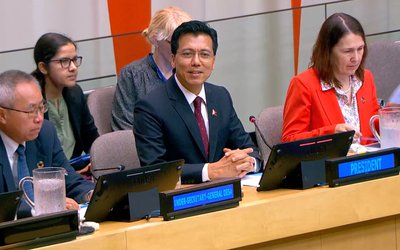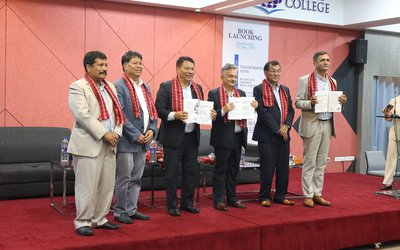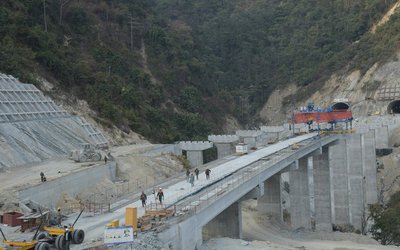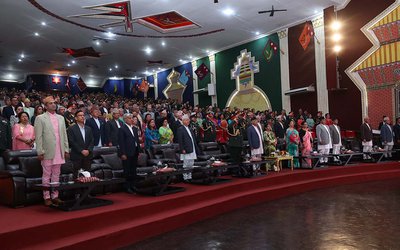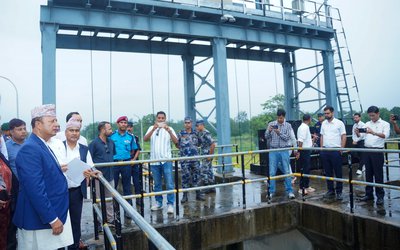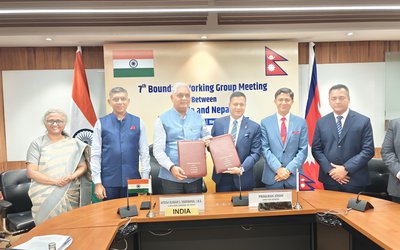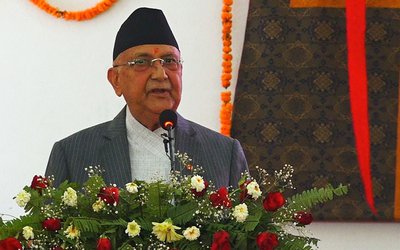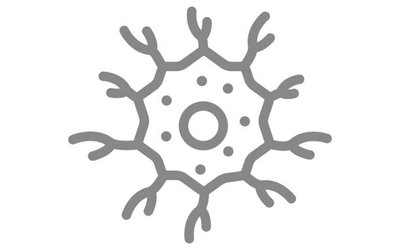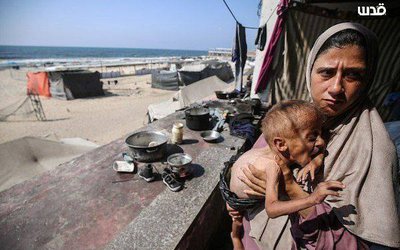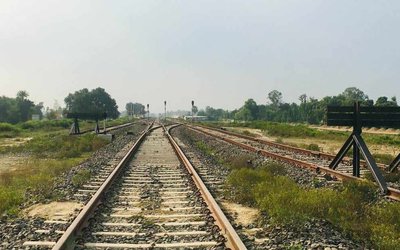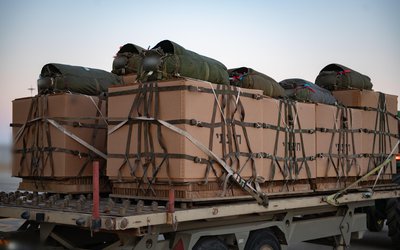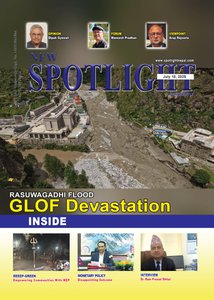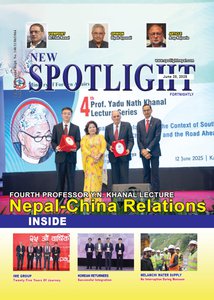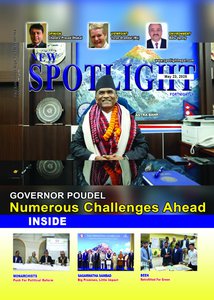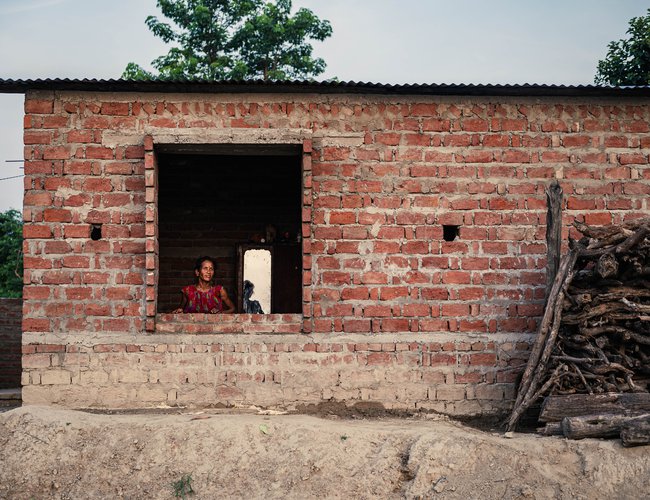
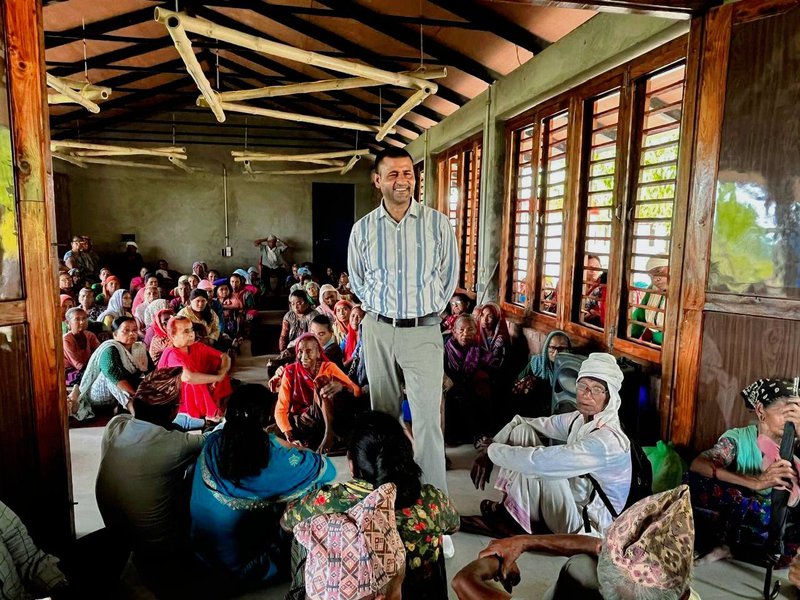
Mayor Lamsal with People
In Nepal’s scorching Terai plains, where summer temperatures often exceed 40°C and winters bring harsh cold, having a structurally safe house is no longer enough. For ultra-poor communities—especially those with disabilities—thermal comfort is essential for survival.
Funded by the European Union under the SWITCH-Asia Programme, the Building Energy Efficiency in Nepal (BEEN) project is transforming housing practices by making homes safer, more affordable, and thermally adaptive.
Providing technical support to Thakurbaba Municipality, BEEN has helped incorporate climate-resilient design into new housing. “Thanks to BEEN’s technical support, we’ve built 74 thermally comfortable houses out of 102 total houses this year,” said Tilak Ram Lamsal, Mayor of Thakurbaba Municipality. “Previously, we only focused on structural safety for poor and ultra-poor households. This year, we have included thermal comfort in our safe housing efforts.”
BEEN is implemented by a consortium led by the University of Innsbruck, Austria, in collaboration with MinErgy Pvt. Ltd., Nepal; Greentech Knowledge Solutions Pvt. Ltd., India; and Asociación Española de Normalización (UNE), Spain, in coordination with Nepal’s Ministry of Federal Affairs and General Administration (MoFAGA).
From Thatched Huts to Thermally Safe Homes
In Ward 9 of Thakurbaba Municipality, Bardia district, 35-year-old Agi Shara, a woman with a disability, and her husband used to live in a fragile thatched hut, constantly threatened by floods and wild animals. With support from the municipality’s housing subsidy and technical guidance from BEEN-trained supervisor Kamal Tharu, Agi decided to build an energy-efficient home with thermal insulation.
Although their new house is not yet complete—it still lacks window fittings and plaster—the family already feels safer and more comfortable. “We no longer have to sleep outside during the summer,” said Agi, as her 6-year-old daughter smiled. Agi especially praised the white-painted CGI roof that reflects heat and keeps the interior cooler.
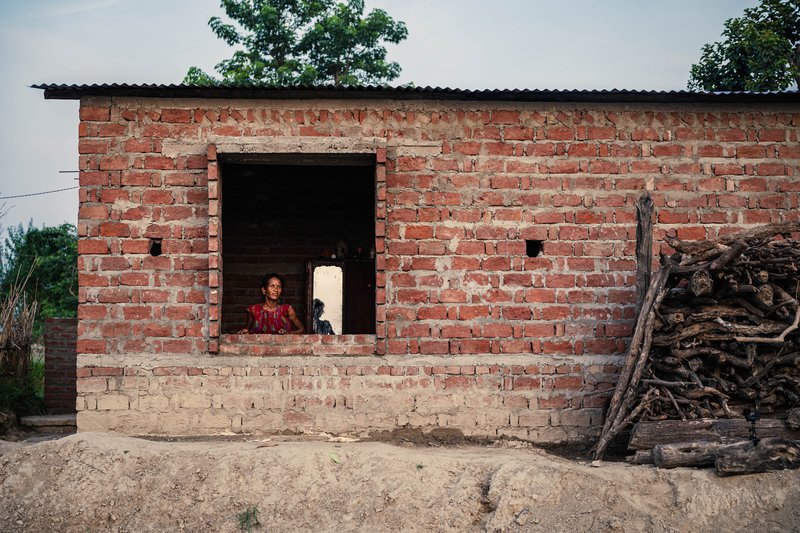
Agi Shara In her new home photo : BEEN
Surrounded by the Babai and Karnali rivers and the Bardia National Park, the ultra-poor in Thakurbaba live under constant threat from floods and wildlife, including elephants and tigers. Now, with rising temperatures, heat stress has become an additional threat.
Over the past seven years, Thakurbaba Municipality has provided grants of NPR 150,000 to 200,000 to over 4,100 poor and ultra-poor families to build flood- and wildlife-resistant homes. With BEEN’s involvement, the municipality now provides an additional NPR 25,000 to help families incorporate thermal comfort features.
“Studies in Thakurbaba showed that while houses may be structurally safe, they are often thermally unsafe. During the hot months, people couldn’t stay indoors,” said Suyesh Prajapati, Team Leader of BEEN. “Following discussions with local political leaders, we were asked to design energy-efficient, thermally comfortable homes. We provided the designs and trained local masons to implement them.”
Energy-Efficient Design with Local Support
Mayor Lamsal highlighted that BEEN’s support has enabled the construction of energy-efficient homes for ultra-poor families, including flood and conflict victims, people with disabilities, and other vulnerable groups.
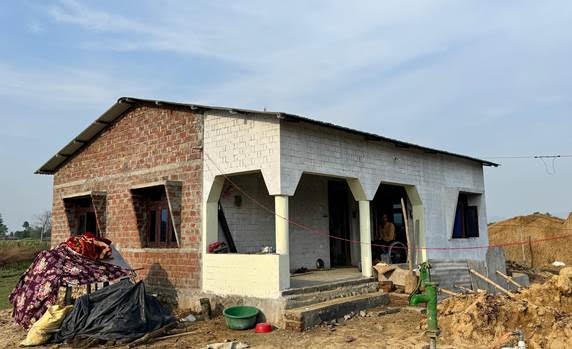
Newly built Thermal comfort house in Thakurbaba Photo: BEEN
“Thermal comfort homes feature different wall types, larger windows and doors, and technologies to reduce heat transfer,” said Lamsal. “Energy-efficient homes are highly beneficial in our region.”
“BEEN has constructed 74 thermally comfortable and energy-efficient homes,” said Usha Maskey Manandhar, Adviser on Policy, Governance, Gender Equality, and Social Inclusion for the BEEN project. “As awareness increases, adoption is accelerating. One of our best practices is training masons who later train others and supervise construction. The municipality has appreciated this approach.”
“Out of many trainees, we selected two masons and employed them as supervisors,” Maskey added. “Since it's not feasible to place technical overseers everywhere, we empowered these skilled masons to supervise construction and raise awareness among communities about the benefits of thermal comfort.”
Of the approximate total house cost of NPR 600,000, the municipality provides grants ranging from NPR 100,000 to 150,000. An additional NPR 50,000 is now being provided to support energy-efficient construction.
The availability of local technical knowledge has helped accelerate implementation. Many local masons are now well-versed in energy-efficient building practices.
Why Thermal Comfort Matters
Traditional safe housing in the Terai—built with brick walls and CGI roofs—may withstand environmental threats but often trap heat, making them unbearable during heatwaves. BEEN research shows that indoor temperatures in poorly designed homes can be up to 9°C higher than the outside during peak heat.

Safe House but unsafe to heat Photo: BEEN
According to the World Health Organization, 35°C is the upper threshold for thermal safety. Beyond this point, health risks rise—especially for children, the elderly, and people with chronic illnesses. Similarly, temperatures below 12°C in winter can also be dangerous.
BEEN homes are designed to maintain a safe indoor temperature range of 18°C to 32°C. These houses incorporate rat-trap brick walls, cavity insulation, strategic cross-ventilation, and Solar Reflective Index (SRI) paint to minimize heat transfer.
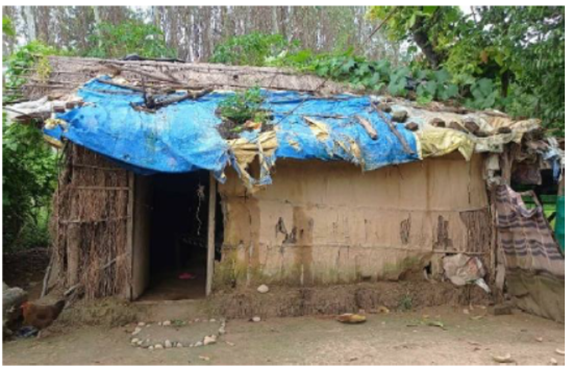
Old unsafe house of mud and thatch Photo: BEEN
A Scalable Solution: Municipal Partnership
With over 57,000 residents and 11,564 households, Thakurbaba Municipality has embraced BEEN’s model. The region’s temperature ranges from 8°C in winter to 43°C in summer, posing serious threats to its 4,100 poor and ultra-poor families.
The municipality has supported the construction of more than 100 energy-efficient homes, 80 of which include advanced thermal safety features. Mayor Lamsal noted that NPR 375,000 is provided per house for people with disabilities, and NPR 175,000 for other vulnerable families, with additional support from partners.
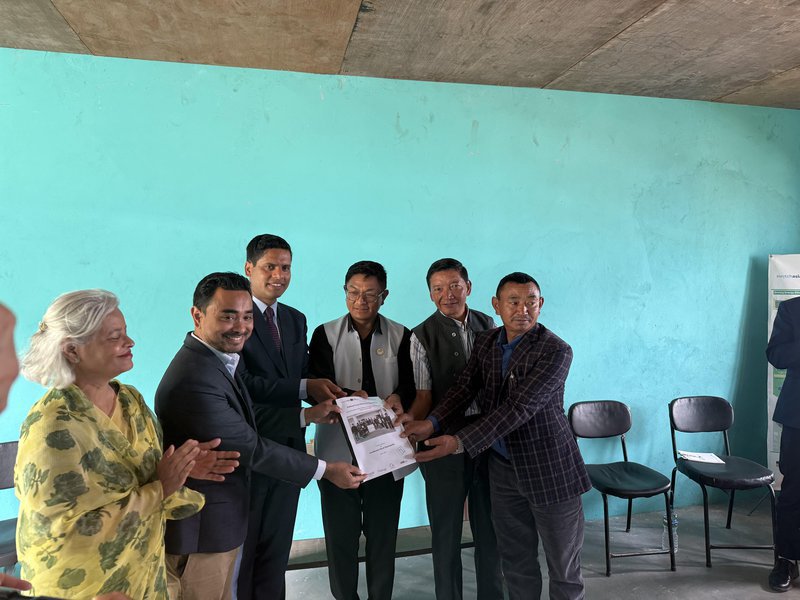
Usha Maskey Manandhar and Suyesh Prajapati (left) are seen receiving a letter of appreciation from Gosaikunda Rural Municipality in Dhunche after handing over a classroom that has been retrofitted for thermal comfort by BEEN.
“Our goal is to make homes not just structurally safe, but livable year-round,” said Lamsal. “These buildings stay cooler in summer, warmer in winter, and use less energy.”
Training Locals, Empowering Communities
BEEN is not just about better buildings—it’s about building capacity. The project has trained 27 local masons, two of whom now serve as supervisors to guide construction and promote energy-efficient methods. These trained individuals are now key change agents in their communities.
A model house was built to demonstrate how simple and cost-effective design features can drastically improve thermal comfort. “We used rat-trap brick walls, which use fewer bricks and offer better insulation,” said Prajapati. “The white SRI-painted CGI roof reflects sunlight, while bamboo mats and cross-ventilation reduce indoor heat. Wall insulation further regulates temperature.”
“Even without air conditioning, indoor temperatures in these homes are up to 5°C cooler than the outside,” he added.
BEEN has been providing support for thermal comfort in houses in hot plain areas but also in high-altitude, cold regions. In Mustang and Rasuwa, BEEN has been advocating for energy efficiency and thermal comfort in buildings. In Dhunche, the headquarters of Rasuwa District, BEEN has offered technical assistance to enhance the thermal comfort of classrooms during winter and cold weather.
Climate Adaptation through Housing
The BEEN model is more than just a local innovation—it represents a scalable climate adaptation strategy for Nepal’s Terai and beyond. As heatwaves grow more frequent, vulnerable communities urgently need homes that reduce heat stress and support better health.
This approach can be expanded across municipalities with similar climate vulnerabilities. Government housing programs like Janata Awas can integrate BEEN’s findings to build safer, more resilient public housing.
Affordable Comfort, Sustainable Future
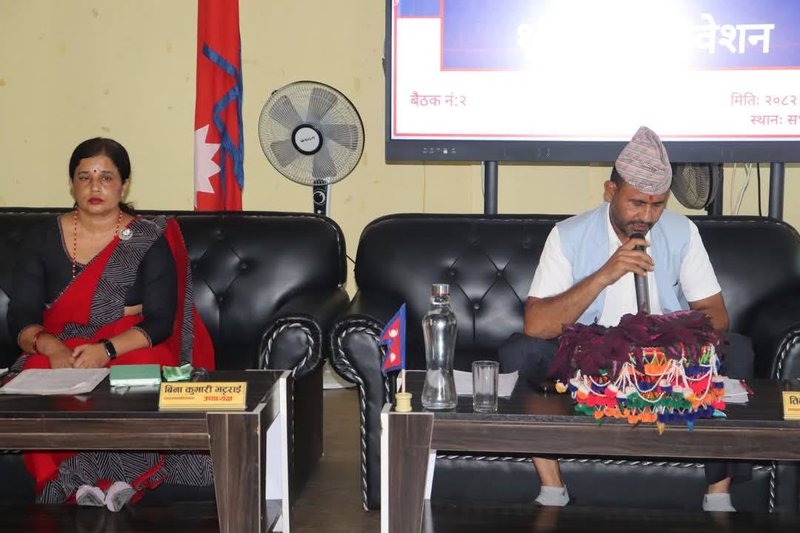
Mayor and Deputy Mayor at Palika Meeting
BEEN has proven that with just NPR 50,000–70,000 in additional investment and intelligent design choices, thermal comfort can be achieved in low-cost housing. This not only protects vulnerable populations but also lowers energy demand and supports Nepal’s climate goals.
As Mayor Lamsal put it, “Safe housing is not just about cement and brick walls and CGI Sheet roofs—it’s about thermal comfort, and climate resilience.”
- Lok Bahadur Thapa of Nepal elected President of the UNECOSOC
- Aug 01, 2025
- Prime Minister's Oli To Participation on LLDC3 In Turkmenistan
- Aug 01, 2025
- Book On Transforming Nepal; Balancing Growth With Equity Released
- Aug 01, 2025
- Kathmandu-Tarai-Madhes Fast Track Project Makes 42.13 Percent
- Aug 01, 2025
- Weather Forecast: Generally Cloudy Across The Country With Rain At Few Placces In The Terai Region
- Aug 01, 2025
